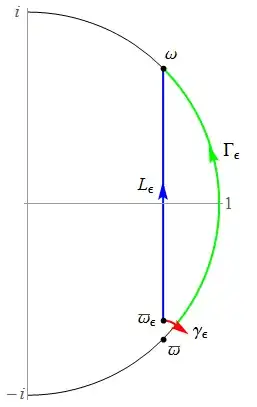Here is a solution that only uses complex analysis:
Let $\epsilon$ > 0 and consider the truncated integral
$$ I_{\epsilon} = \int_{-1+\epsilon}^{1} \frac{\arctan x}{x+1} \log\left( \frac{1+x^2}{2} \right) \, dx. $$
By using the formula
$$ \arctan x = \frac{1}{2i} \log \left( \frac{1 + ix}{1 - ix} \right) = \frac{1}{2i} \left\{ \log \left( \frac{1+ix}{\sqrt{2}} \right) - \log \left( \frac{1-ix}{\sqrt{2}} \right) \right\}, $$
it follows that
$$ I_{\epsilon} = \Im \int_{-1+\epsilon}^{1} \frac{1}{x+1} \log^{2} \left( \frac{1+ix}{\sqrt{2}} \right) \, dx. $$
Now let $\omega = e^{i\pi/4}$ and make the change of variable $z = \frac{1+ix}{\sqrt{2}}$ to obtain
$$ I_{\epsilon} = \Im \int_{L_{\epsilon}} \frac{\log^2 z}{z - \bar{\omega}} \, dz, $$
where $L_{\epsilon}$ is the line segment joining from $\bar{\omega}_{\epsilon} := \bar{\omega} + \frac{i\epsilon}{\sqrt{2}}$ to $\omega$. Now we tweak this contour of integration according to the following picture:

That is, we first draw a clockwise circular arc $\gamma_{\epsilon}$ centered at $\bar{\omega}$ joining from $\bar{\omega}_{\epsilon}$ to some points on the unit circle, and draw a counter-clockwise circular arc $\Gamma_{\epsilon}$ joining from the endpoint of $\gamma_{\epsilon}$ to $\omega$. Then
$$ I_{\epsilon} = \Im \int_{\gamma_{\epsilon}} \frac{\log^2 z}{z - \bar{\omega}} \, dz + \Im \int_{\Gamma_{\epsilon}} \frac{\log^2 z}{z - \bar{\omega}} \, dz =: J_{\epsilon} + K_{\epsilon}. $$
It is easy to check that as $\epsilon \to 0^{+}$, the central angle of $\gamma_{\epsilon}$ converges to $\pi / 4$. Since $\gamma_{\epsilon}$ winds $\bar{\omega}$ clockwise, we have
$$ \lim_{\epsilon \to 0^{+}} J_{\epsilon} = \Im \left( -\frac{i \pi}{4} \mathrm{Res}_{z=\bar{\omega}} \frac{\log^2 z}{z - \bar{\omega}} \right) = \frac{3}{2} \frac{\pi^3}{96}. $$
Also, by applying the change of variable $z = e^{i\theta}$,
$$ K_{\epsilon} = -\Re \int_{-\frac{\pi}{4}+o(1)}^{\frac{\pi}{4}} \frac{\theta^2}{1 - \bar{\omega}e^{-i\theta}} \, d\theta = \int_{-\frac{\pi}{4}+o(1)}^{\frac{\pi}{4}} \frac{\theta^2}{2} \, d\theta. $$
Thus taking $\epsilon \to 0^{+}$, we have
$$ \lim_{\epsilon \to 0^{+}} K_{\epsilon} = - \int_{0}^{\frac{\pi}{4}} \theta^2 \, d\theta = - \frac{1}{2} \frac{\pi^3}{96}. $$
Combining these results, we have
$$ \int_{-1}^{1} \frac{\arctan x}{x+1} \log \left( \frac{x^2 + 1}{2} \right) \, dx = \frac{\pi^3}{96}. $$
The same technique shows that
$$ \int_{-1}^{1} \frac{\arctan (t x)}{x+1} \log \left( \frac{1 + x^2 t^2}{1 + t^2} \right) \, dx = \frac{2}{3} \arctan^{3} t, \quad t \in \Bbb{R} .$$
